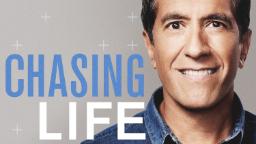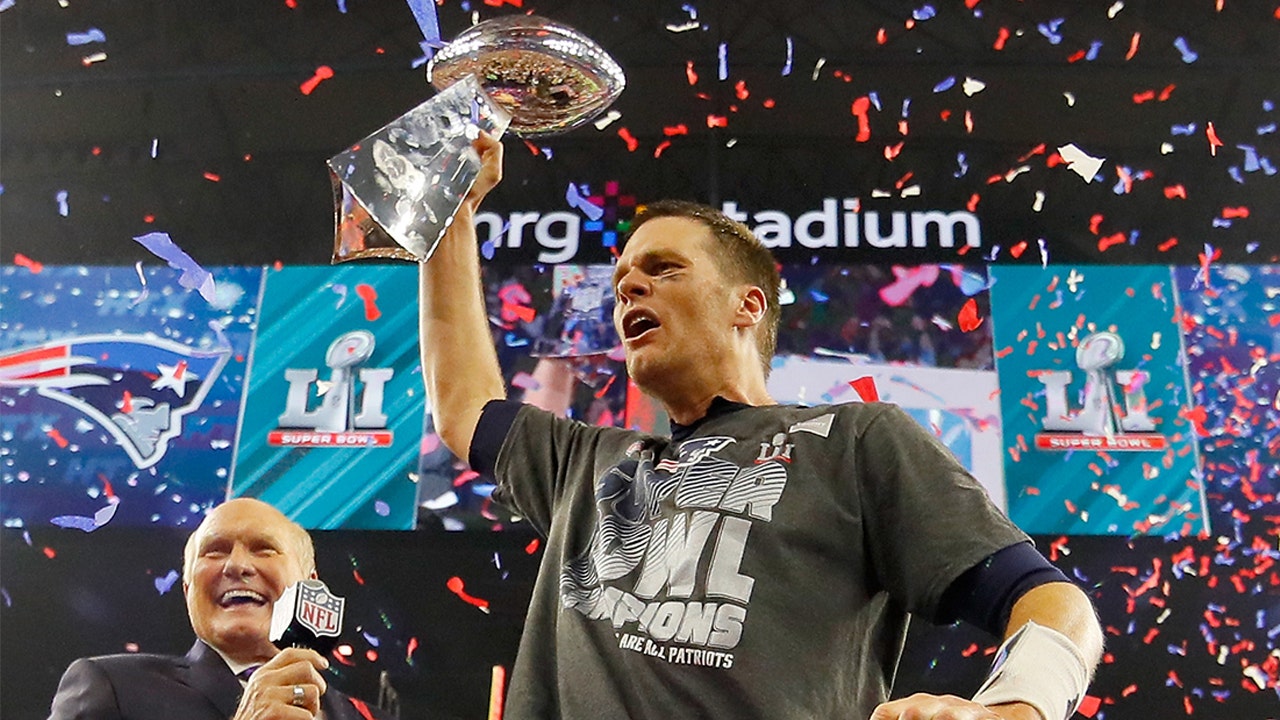
Dr. Sanjay Gupta
00:00:03
You’re listening to the sound of a video game called Endeavor RX. And 13-year-old Owain is a big fan.
Owain Sihanourath
00:00:11
The whole point of the game is to catch these little creatures and return them to your little home base. And if you complete these goals, you will get rewarded for them.
Dr. Sanjay Gupta
00:00:22
But here’s the thing, Endeavor RX is not just any video game.
Owain Sihanourath
00:00:27
I was shocked that there’s an actual video game that could help with ADHD.
Dr. Sanjay Gupta
00:00:31
That’s right! It’s a game that doctors prescribe to treat two types of attention deficit hyperactivity disorder — ADHD — in children. Since he was very little, Owain says he has struggled to do things that come easily to others.
Owain Sihanourath
00:00:45
During times where I really just wasn’t interested in class or doing any work, I would zone off, but I wouldn’t just zone off. I would think of like my own little paradise, my reality. And I would just be there for a very long time not knowing what’s going on.
Kelcey Sihanourath
00:01:02
Before school, we would have to wake him up like an hour and a half before school.
Dr. Sanjay Gupta
00:01:07
That’s Owain’s mom, Kelcey.
Kelcey Sihanourath
00:01:09
And he would be staring at a blank wall for, like, five, 10 minutes before he did anything. And then you’d have to go, hey, focus, buddy, put your pants on. And an hour and a half and he still would be running out of the house with his shoes barely on his feet.
Dr. Sanjay Gupta
00:01:25
First, they tried therapy and medication.
Owain Sihanourath
00:01:27
And the medication. Oof.
Kelcey Sihanourath
00:01:30
That’s when we found out that he has pediatric migraines, which makes him throw up.
Dr. Sanjay Gupta
00:01:36
Owain simply couldn’t tolerate the medication, and Kelcey thought they were out of options. Until she heard about this video game.
Kelcey Sihanourath
00:01:44
I mean, it’s been it’s amazing. I mean, it’s truly given us a whole different life than what we had.
Dr. Sanjay Gupta
00:01:52
Now you’re probably thinking, video games tend to have a pretty bad reputation. Some of them can get violent, and as a parent, I know they can be very addictive for kids… Even adults, I admit it! Well, it turns out games can do good as well. So in this episode, we’re going to explore a brand new form of medicine, one that you can download on your iPad… One that doesn’t just treat the symptoms of ADHD, but attempts to also reshape the underlying brain circuitry that’s at the heart of the problem. I’m Dr. Sanjay Gupta, CNN’s Chief Medical Correspondent… Pick up your video game controller. It’s time to start chasing life.
It is an incredibly exciting moment for us to take a video game for the first time ever through this FDA process, which occurred during COVID. It was one of the silver linings for me of a really challenging time.
Dr. Sanjay Gupta
00:02:51
That’s Doctor Adam Gazzaley. He’s a neuroscientist. He’s also co-founder of Akili Interactive. That’s the company that created Endeavor RX, the prescription only video game that got FDA marketing authorization back in June of 2020. It’s designed as a treatment for kids 8 to 12 with ADHD. Adam also runs a lab at the University of California, San Francisco, called Neuroscape. That’s where he and his team research how technology can be harnessed to improve cognitive function… Processes such as attention, memory, perception and more. I visited Adam’s lab back in 2016 and I got a firsthand look at their work. Adam and I recently had a chance to catch up again.
Dr. Sanjay Gupta
00:03:36
You know, it’s interesting. I think I mentioned this to you when I first again saw you at your lab several years ago. I, I tend to get very addicted to things, to video games. In fact, I, many years ago, my wife bought me a PlayStation and I had to return it, Adam, because I recognized what was happening. I played for an entire weekend straight.
I sympathize with that. I am also pretty addictive with video games.
Dr. Sanjay Gupta
00:04:05
Did you, I mean, did you grow up sort of gaming? Do you still game?
I did. I think we’re similar in age. I grew up playing Atari and all those early games like Asteroids and Space Invaders, the beginning of the genre. And then, yeah, I played, I dropped out of playing during medical school and residency because I was too busy. But I, you know, then when mobile devices came out, I’d play like the little, you know, games on my iPhone. So yeah, I played video games most of my life.
Dr. Sanjay Gupta
00:04:31
This isn’t the sort of focus of this podcast, but what you know, a lot of people still do that, in fact, and I and I still will do that at times, you know, pull out my phone if I have some idle time waiting for a flight or something and play. Good idea? Bad idea? Helpful? Not helpful?
Well, you know, challenge and our brain are really best friends. Our brain doesn’t like passivity. The idea of just, you know, retiring and doing nothing is not great for your brain. And obviously, too much stress can have damaging effects. But the the question will be, you know, what are the benefits? Are the benefits meaningful? Are they enduring? And, you know, there is a research literature showing that even consumer video games have benefits on cognition. And that was that was an inspiration for me because if a game that’s just targeted to have fun can show benefits on cognitive abilities, then how much better could we do if we built a game, you know, targeted to neural networks with adaptive algorithms trying to improve cognition?
Dr. Sanjay Gupta
00:05:37
So that’s what Adam did with basic neuroscience at the heart of it.
The core principle is that our brain has this phenomenon known as neuroplasticity, and that it can change itself and modify its function, its structure, even its chemistry in response to experiences. And it’s in many ways it’s the most ancient medicine for the mind. Things like meditation and mindfulness have been used for thousands of years for release of mental suffering. And what we have done in both my research at UCSF and now with Akili Interactive is advance that concept of what I think of as experiential medicine — experience as medicine to help improve brain function. And having the opportunity to use technology to create very personalized experiences where the challenges and the rewards are targeted to that individual. And then being able to do very careful, randomized, controlled testing similar to what’s done with pharmaceuticals and drugs. And so you have all these advantages of modern technology, and then you couple it with this ancient practice of experience as medicine, and you wind up with a new type of treatment with a video game as medicine.
Dr. Sanjay Gupta
00:06:52
I think I think when I was again at your lab in California, there was I was playing some of the games and I remember I had to to multitask. And and and that wasn’t it wasn’t easy. I mean, it was I felt that it was challenging. Is was that the precursor of what eventually became Endeavor RX today?
So you know the first version of this game was from 2009 and it was called NeuroRacer. And the research on that became the subject of a scientific paper published in Nature and showing that it could have benefits on older adults and their attention abilities. And then eventually it became what we now call Endeavor RX, a much better game from the point of view of art, music, story, interactivity, the game that a 12-year-old could really enjoy. But what’s interesting is that the core mechanics of the game were preserved all the way from 2009. That is the active ingredient of our medicine. So the cool thing is that we get to build all the elements around that core that might make it more fun and target it for different audiences.
Dr. Sanjay Gupta
00:08:00
You know, I’m wondering, when you first started thinking about this, how did you think about it initially? You know, like if you’re thinking about a cholesterol lowering medication, for example, it might do something to lower the amount of cholesterol your liver makes or maybe it pulls cholesterol out of your GI tract. So you have some sense of the mechanism may or may not work, but you have an idea of what you’re trying to do when it comes to the idea of thinking of of these technologies as video technologies, as a therapeutic. How did you first think about it?
So like 14 years ago, I was studying aging the aging brain, as you know, and I had been studying attention. And we showed and many others have shown this, that when you engage in a certain experience, the networks in your brain activate in a very selective way. This is the underlying principle of how the brain works, something that we’ve actually never accomplished with the drug before is this type of selective activation of brain networks. And so we know that an interaction with the environment can activate the brain selectively. And so given that we know the brain is plastic and responds and optimizes its function, if you create an environmental interaction, you will get the selective network activation. And then by challenging at higher and higher levels, as the brain continues to optimize its function, you could advance and improve abilities. And so that was really the hypothesis that because an experience activates brain networks selectively, we would get much less side effects than we do with our current treatments for the brain, which activates the brain in a pretty blunt matter without the selectivity. And then because the brain has this property of learning over time, we would see improvements as as a person engaged over a period of time.
Dr. Sanjay Gupta
00:09:48
If you put it all together central to Endeavor RX is its closed loop system. That’s an engineering term. That means the game adjusts and adapts to the player’s skills in real time while the player is playing.
That’s a very key ingredient of our video games that differentiates it from consumer games. And then you improve over time. But if you don’t get better on things outside of the game, what we call transfer, then you can’t really begin to think about it as something that would fall into the category of medicine. And so the hypothesis there was, based upon our research, as well as many other labs, we showed that there are common brain networks that exist between things like attention and things like short term memory and multitasking, task switching. And so if you can improve one of these abilities by a very high level challenge through game play, the hypothesis was that you would see benefits on using your brain outside of the game. And that’s what we have shown and continue to show over the years and that that is the key point that advances it beyond entertainment to something that we could think of as medicine.
Dr. Sanjay Gupta
00:10:57
So you’re not just getting better at the game. You have these things that are then transferable.
Dr. Sanjay Gupta
00:11:04
After multiple trials involving a total of more than 600 kids, adam and the team at Akili submitted their game to the U.S. Food and Drug Administration as a treatment for ADHD. A little over two years ago, the FDA gave the video game approval, and it’s now available with a prescription for children eight through 12 as a part of a comprehensive treatment program. So how exactly would the process work for a concerned parent who has a child with ADHD?
I hear it all the time if a friends is saying that their child is ten years old and not responding to medication or they don’t want to, you know, they want something different, it is prescribed by a physician and obtainable as a medication, just as a stimulant is for the same condition. And it would be something that can be downloaded to their own device. So I think that’s really important because it helps with accessibility that, you know, we don’t have to ship out devices to everyone in need, most people have a phone or tablet. And then they would be given a pathway of engagement which would involve playing it for 30, approximately 30 minutes a day, five days a week for a month. And that’s that’s a dose of this medication. And they would receive the challenges and rewards that the game is offering them that are putting pressure on those neural networks involved in attentional control. And as our data has shown and many different studies, including in this population, their ability to focus their attention in boring environments, not the game environment, improves.
Dr. Sanjay Gupta
00:12:47
Is there a way of describing to the non-neuro audience what is happening in the brain with this type of therapy?
Yeah. So how our brain works when it comes to attention is that the front part of our brain, the prefrontal cortex, which is the most evolved part of the human brain, forms connections with the other areas of brain. We call those neural networks. So if you’re looking at something, there’s a network between your prefrontal cortex and the visual area. And these networks are involved in focusing your attention, engaging in the world around you based upon your goals. What we find after gameplay, a month of gameplay, is that the network strength is increased. So the ability of you to engage your brain in this way, to focus attention is at a higher level, you know, not quite the same as going to the gym and, you know, using a weight and seeing your muscle get bigger, but not dissimilar from that. That you’re using this muscle in your brain every day and, you know, you have like the best personal trainer built into the game that’s constantly challenging you right at the edge of your ability. So if it’s if it’s too easy, it’s just going to be pushed a little bit harder. And then after all that, you have this stronger muscle, your brain, and you’re able to use your attention more effectively.
Dr. Sanjay Gupta
00:14:12
Now, understandably, there are critics who said they didn’t think that the benefits of the game would translate to improvements in real life skills. But people like Owain Sihanourath’s mom, Kelcey, were desperate for new options.
Kelcey Sihanourath
00:14:25
As soon as it got approved, I sat down with my husband and I was like, Hey, you know, the FDA says that this is approved and we should try it. And I showed them a little ad about it, and he was like, it’s a game. I was like, I know. But it’s like, well, let’s just try it. What do we have to lose? It’s not like it’s going to make him any worse.
Dr. Sanjay Gupta
00:14:41
So Kelcey quickly arranged for Owain to get a prescription for Endeavor RX from their pediatrician. Akili Interactive connected us with them for the purposes of this episode.
Kelcey Sihanourath
00:14:51
So we sat down with Owain and we talked about, you know, Hey, bud, this is what is going on with you. Instead of going from point A to point B, you go from point A to Z to the number four. And then eventually when somebody reminds you you’re supposed to go to B, you get there. And he’s like, okay. This game is going to help your brain learn how to go from A to B. It’s going to take practice and it’s going to be something you’re going to have to work towards. But it’s a video game, you know, he’s going to like this.
Dr. Sanjay Gupta
00:15:24
Together, Kelcey and Owain made a list of tasks for Owain to try to do as his attention improved. Things like…
Kelcey Sihanourath
00:15:31
Don’t forget your water bottle at school. And then I had a list of, I think one of my things was emptying the dishwasher in under an hour.
Dr. Sanjay Gupta
00:15:39
Owain played the game five days a week, 25 minutes each day for several weeks. Then he took a break before resuming another round of treatment.
Owain Sihanourath
00:15:50
So at first it was fine, but then we got into like the second and third levels where it’s like you have to click multiple creatures and they have different shapes and colors this time while having to dodge like potholes and having to hit certain power zones. Very difficult.
Dr. Sanjay Gupta
00:16:07
There were days when he wanted to give up. He wanted to stop playing because of how hard it was.
Owain Sihanourath
00:16:13
I tried to like glitch the system. I actually tried to find glitches in order to skip certain levels so I didn’t have to keep on playing.
Dr. Sanjay Gupta
00:16:22
But with support from his mom, he kept going. And after just a month, Owain was already showing progress in the real world outside of the game.
Kelcey Sihanourath
00:16:32
I still remember the day that I realized it was working. We were sitting on the couch and we were waiting for the bus and we had like 30 minutes before the bus got there, which I noticed. I was like, Wow, we’re not running out of the door. And I looked over and my son had tied his shoes. I mean, even now I’m kind of getting teary eyed thinking about it like this kid was, he didn’t, he like wouldn’t even put his shoes on the right feet most mornings. And here he is, 30 minutes before we have to go outside. And he’s tied his shoes already, you know, like, oh, my God, it was such a big, big moment. And when I like try to explain to people, most people are like, well, okay, he should be able to do that anyway. And I’m like, he should, but he couldn’t and now he can. And that is like, it’s life changing.
Dr. Sanjay Gupta
00:17:27
Owain is 13 now, so he’s no longer eligible to play the game, but he’s still doing well.
Kelcey Sihanourath
00:17:34
I’m so proud of him. This is a kid who who failed third grade and was not doing good the second time around. And now he’s AB Honor Roll. And you know it’s not it’s not that Endeavor made my child smarter. Endeavor helped my child have the tools to be able to facilitate his own learning.
Dr. Sanjay Gupta
00:17:59
The irony is this: video games have always been considered the one thing that kids with ADHD can focus on, often to the detriment of everything else. But now for Owain, one of his favorite activities is also the thing that’s helped him control his ability to pay attention.
Owain Sihanourath
00:18:18
I didn’t really notice it at first. Like I thought everything was still the same. But then eventually I caught on not being like, forgetting getting my pencils during class or leaving my lunchbox behind. I mean, I used to forget my pencils all the time. That was such a big thing because I would only bring one pencil to school. Those tiny mistakes were very frustrating. So now that I remember to keep up with my stuff, that’s been really cool. I was very, very proud of myself.
Dr. Sanjay Gupta
00:18:45
When we come back, Adam and I are going to discuss how video games might help even more of us in the future.
In ten years, we have another entirely new industry like the pharmaceutical industry, except for video games as medicine.
Dr. Sanjay Gupta
00:18:58
But first, speaking of games, I do want to help with something. We have an upcoming episode all about play and we want to hear your thoughts. What are some of the ways you found to keep the concept of play from your childhood alive in your adult life? Record a voice memo and email it to AskSanjay@cnn.com… or give us a call at 470-396-0832 and leave a message. And now back to Chasing Life.
Yeah, this is our treatment software that we’re going to have you demo.
Dr. Sanjay Gupta
00:19:33
Should I be nervous?
I don’t think so. This customizes to everyone, so it will adjust to your abilities as you go along.
Dr. Sanjay Gupta
00:19:41
All right.
Dr. Sanjay Gupta
00:19:42
Back in 2016, I met with Adam and the team at Akili to try out this new game they’ve been developing… A prototype for what would eventually become Endeavor RX.
Dr. Sanjay Gupta
00:19:56
How’d I do?
Dr. Sanjay Gupta
00:19:58
Good so far?
Dr. Sanjay Gupta
00:20:00
Between steering the ship and catching the characters, I gotta tell you, the game wasn’t necessarily easy, but it was fun. And it made me wonder, what’s next?
Well, Akili’s immediate path, which probably won’t be very surprising to a listener, is to expand the age range. Right. Because ADHD is not limited to 8 to 12 year olds. There are many adults that suffer from ADHD, including seniors. And then there are other conditions that have attention deficits, even though they might not have it in the name like ADHD, for example, depression, autism, multiple sclerosis. These are all conditions that we already have data for the benefits on attention using Endeavor RX in these populations. So we’ll be expanding the indication to other populations of individuals and be able to have you know, larger, broader applicability of this treatment.
Dr. Sanjay Gupta
00:20:53
What about for the healthy brain? What about the idea of thinking this as a supplement or an optimization tool?
Who does it need better attention abilities? Who doesn’t want to remember things better or make, you know, and even moving beyond that, make better decisions, feel more empathy, regulate their emotions more, you know, more effectively. And so can this be a preventative measure? Can it be the type of thing that you would take as you get older to help keep your brain healthy? All of that, I believe, is possible. And we have data that supports that. And so that is a direction that we’re very interested in expanding those offerings.
Dr. Sanjay Gupta
00:21:32
You know, it’s interesting you gave the sort of the background and what sort of inspired some of your earliest work. You know, if you’re talking specifically about a therapeutic and in this case for children who have ADHD, it’s it’s pretty incredible. I mean, it seems like there’s a tremendous need there, but there’s also medications. Were you trying to solve an unmet need? Were you frustrated by the existing therapies or was there anything else sort of pushing you along?
Yeah, I’m really glad you said that. You know, the two main inspirations back in the early days when I started this work was one, that I saw that there was an opportunity to use technology and harness neuroplasticity to lead to benefits. But the other, was the tremendous need that exists across pretty much all neurological and psychiatric conditions that affect the mind. Whether we’re talking about memory, perception, attention, emotional regulation, stress regulation, even moving outside of the, you know, clear medical domain of things like empathy and compassion and decision making. All of these abilities, I feel, are are lacking and have not been optimized. I sort of refer to this as a cognition crisis that that that we’re in that I think is global. And I was very frustrated and still remain frustrated that the you know, the main main paradigm in medicine for the mind today is that somewhere out there is this magic brain pill that’s just going to fix it and we just have to find it, but but it’s there. And, you know, we’ve been doing this for 70 years, right? Trying to find something, and schizophrenia’s gone, autism’s gone, depression’s gone, Alzheimer’s gone. We have not succeeded. But the time is ripe for us to pursue other pathways to improve brain function.
Dr. Sanjay Gupta
00:23:21
In the meantime. To be clear, Adam doesn’t think video games will replace pills or other medicines entirely.
You know, what I believe will happen is that the drugs that we use today to treat the diverse range of conditions from depression to anxiety and on, and even Alzheimer’s disease, will be used in lower doses so that they have less side effects, but they will not be used in isolation. They will be used to activate these neurotransmitter receptor systems, but without the specificity. And then experiential medicine, which is, I would say a video game treatment is one version of that, will be used to put pressure on those selective neural networks to help actually use those drugs better in a more selective way. I think that they would work well together.
Dr. Sanjay Gupta
00:24:12
Of course, it’s always hard to predict what is actually going to happen ten, five, even a year from now. But it’s heartening to know that some of our brightest minds are working on the issue, minds like Adam Gazzaley. And that one day we might all be able to benefit in some way from this research. Let us know what you think about this episode. Did you learn something new? I certainly did. Record your thoughts as a voice memo and email them to AskSanjay@CNN.com or give us a call at 470-396-0832 and leave a message. You can also tweet at me @drsanjaygupta. That’s Dr. spelled D.R. We might even include your responses on an upcoming episode of the podcast. We’ll be back next Tuesday. Thanks for listening. Chasing Life is a production of CNN Audio. Megan Marcus is our executive producer. Our podcast is produced by Emily Liu, Andrea Kane, Xavier Lopez, Isoke Samuel, Grace Walker and Allison Park. Tommy Bazarian is our engineer and a special thanks to Ben Tinker, Amanda Sealy, Carolyn Sung and Nadia Kounang of CNN Health, as well as Rafeena Ahmad, Lindsay Abrams and Courtney Coupe from CNN Audio.



























































